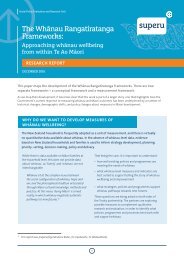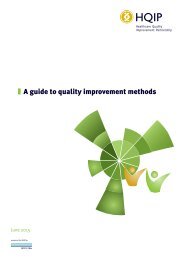2fyY1Py
2fyY1Py
2fyY1Py
Create successful ePaper yourself
Turn your PDF publications into a flip-book with our unique Google optimized e-Paper software.
Abstract<br />
This publication provides up-to-date information on the marketing of foods and non-alcoholic beverages to children and the<br />
changes that have occurred in recent years, focusing in particular on the major shift to digital marketing. It examines trends<br />
in media use among children, marketing methods in the new digital media landscape and children’s engagement with such<br />
marketing. It also considers the impact on children and their ability to counter marketing as well as the implications for<br />
children’s digital privacy. Finally the report discusses the policy implications and some of the recent policy action by WHO<br />
European Member States.<br />
Keywords<br />
Child<br />
Food<br />
Marketing<br />
Internet<br />
Social Media<br />
Pediatric Obesity<br />
Legislation, Food<br />
Europe<br />
Address requests about publications of the WHO Regional Office for Europe to:<br />
Publications<br />
WHO Regional Office for Europe<br />
UN City, Marmorvej 51<br />
DK-2100 Copenhagen Ø, Denmark<br />
Alternatively, complete an online request form for documentation, health information, or for permission to quote or translate, on<br />
the Regional Office website (http://www.euro.who.int/pubrequest).<br />
© World Health Organization 2016<br />
All rights reserved. The Regional Office for Europe of the World Health Organization welcomes requests for permission to reproduce or<br />
translate its publications, in part or in full.<br />
The designations employed and the presentation of the material in this publication do not imply the expression of any opinion<br />
whatsoever on the part of the World Health Organization concerning the legal status of any country, territory, city or area or of its<br />
authorities, or concerning the delimitation of its frontiers or boundaries. Dotted lines on maps represent approximate border lines for<br />
which there may not yet be full agreement.<br />
The mention of specific companies or of certain manufacturers’ products does not imply that they are endorsed or recommended by the<br />
World Health Organization in preference to others of a similar nature that are not mentioned. Errors and omissions excepted, the names<br />
of proprietary products are distinguished by initial capital letters.<br />
All reasonable precautions have been taken by the World Health Organization to verify the information contained in this publication.<br />
However, the published material is being distributed without warranty of any kind, either express or implied. The responsibility for the<br />
interpretation and use of the material lies with the reader. In no event shall the World Health Organization be liable for damages arising<br />
from its use. The views expressed by authors, editors, or expert groups do not necessarily represent the decisions or the stated policy of<br />
the World Health Organization.<br />
Cover photo: © Halfpoint / Fotolia






